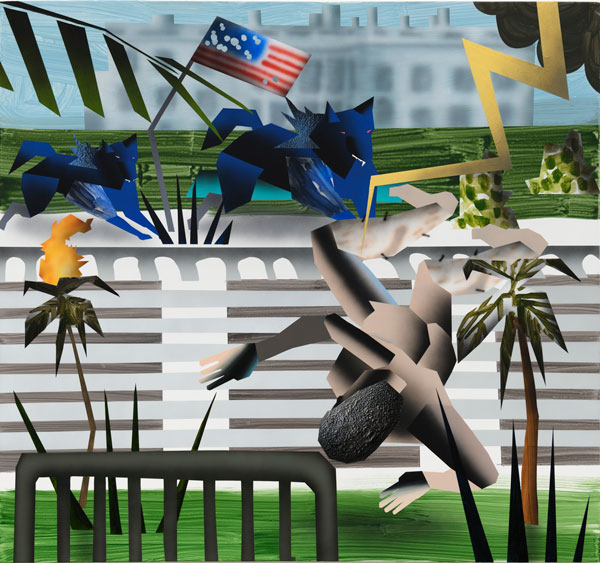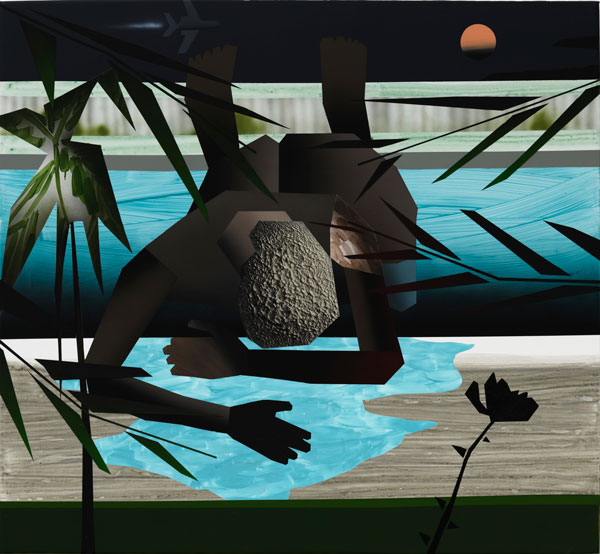A new suite of swimming-pool themed paintings by Brandon Lipchik look like everything but what they are. Their physical surface textures are varied from shape to shape, and even more so the range of techniques employed in each image. Their reductive geometrical and planar elements of nature, architecture and anatomy nestle like intersecting passages of stylized abstraction. Their bold graphic quality, foreshortening and forced perspectives suggest a hyper-flat picture plane when in fact each scene inhabits complex depths of pictorial space. While optically informed by the digital condition, and at moments outright presenting as photo-collage, the works are painstakingly hand-built with layers, expert taping and multiple visual languages. Once the puzzle of how he constructs his images is solved, the content which has presented as quirky, jaunty armatures for flourishes of style reveals nuanced, pensive and even melancholic emotional states.
The swimming pool is the central motif across the exhibition titled “Inground” (all works 2021) and Lipchik both taps into the rich iconography of movies, art history and pop culture, and the double meaning of floating and reflection. The glowing pools charm and beckon, illuminating and anchoring the scenes in the outdoors as well as in architecture. Are the figures by and in the water drowned, drunk or just dreaming? As in Chemtrail Sky and the literally cheeky Tire Swings, (both 54 x 59 inches) we never see their faces, only the backs and tops of their heads, signified by hard-edged hemispheres of thick and dark impasto that more mimics than depicts tight curls. Elsewhere this same technique is used to paint rocks and small boulders from natural vignettes of ponds and perhaps rivers. The water is rendered in delicate blue washes, with the striated wetness of brush work doing the work of its ripples.

Brandon Lipchik, Failed Insurrection, 2021. Photo by Alan Shaffer. Courtesy Richard Heller Gallery.
When there is nature—trees and grass, plants, lawns, marshy reeds—its greenery is rendered in sharp yet wild angles and with a number of effects, both indicating and embodying their organic energy within the scenarios. Torched Mail is like this, as its twin Beckett-like barbeque grills emit the open flames of burned correspondence with a bit of danger and anthropomorphic glee. Like each work, the image is redolent of a juicy backstory. There are animals too, such as one might find in dreams—viscous blue origami dogs and angular, striped snakes with enormous, puppet-like heads as in Snake Puddle. And there are people acting like wild animals, as in the pointed allegory of Failed Insurrection, in which “tourists” take a tumble off the White House walls, and an American flag has bullet holes instead of stars. All of this suggests that while reflection may be a luminous property of atmosphere and light, it is also a state of mind which we as a society badly need at this moment—along with remembering that nothing is as it first appears.


